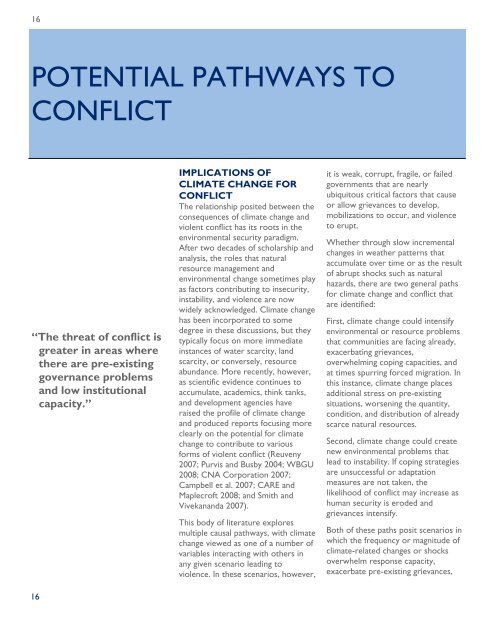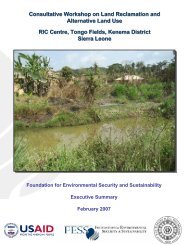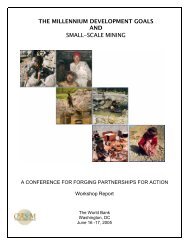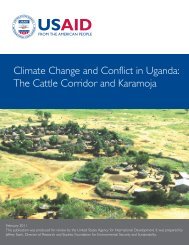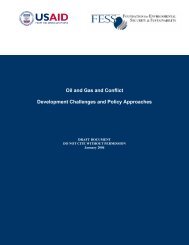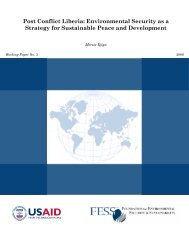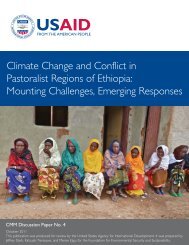Climate Change, Adaptation, and Conflict - FESS :: Foundation for ...
Climate Change, Adaptation, and Conflict - FESS :: Foundation for ...
Climate Change, Adaptation, and Conflict - FESS :: Foundation for ...
Create successful ePaper yourself
Turn your PDF publications into a flip-book with our unique Google optimized e-Paper software.
16POTENTIAL PATHWAYS TOCONFLICT“The threat of conflict isgreater in areas wherethere are pre-existinggovernance problems<strong>and</strong> low institutionalcapacity.”16IMPLICATIONS OFCLIMATE CHANGE FORCONFLICTThe relationship posited between theconsequences of climate change <strong>and</strong>violent conflict has its roots in theenvironmental security paradigm.After two decades of scholarship <strong>and</strong>analysis, the roles that naturalresource management <strong>and</strong>environmental change sometimes playas factors contributing to insecurity,instability, <strong>and</strong> violence are nowwidely acknowledged. <strong>Climate</strong> changehas been incorporated to somedegree in these discussions, but theytypically focus on more immediateinstances of water scarcity, l<strong>and</strong>scarcity, or conversely, resourceabundance. More recently, however,as scientific evidence continues toaccumulate, academics, think tanks,<strong>and</strong> development agencies haveraised the profile of climate change<strong>and</strong> produced reports focusing moreclearly on the potential <strong>for</strong> climatechange to contribute to various<strong>for</strong>ms of violent conflict (Reuveny2007; Purvis <strong>and</strong> Busby 2004; WBGU2008; CNA Corporation 2007;Campbell et al. 2007; CARE <strong>and</strong>Maplecroft 2008; <strong>and</strong> Smith <strong>and</strong>Vivekan<strong>and</strong>a 2007).This body of literature exploresmultiple causal pathways, with climatechange viewed as one of a number ofvariables interacting with others inany given scenario leading toviolence. In these scenarios, however,it is weak, corrupt, fragile, or failedgovernments that are nearlyubiquitous critical factors that causeor allow grievances to develop,mobilizations to occur, <strong>and</strong> violenceto erupt.Whether through slow incrementalchanges in weather patterns thataccumulate over time or as the resultof abrupt shocks such as naturalhazards, there are two general paths<strong>for</strong> climate change <strong>and</strong> conflict thatare identified:First, climate change could intensifyenvironmental or resource problemsthat communities are facing already,exacerbating grievances,overwhelming coping capacities, <strong>and</strong>at times spurring <strong>for</strong>ced migration. Inthis instance, climate change placesadditional stress on pre-existingsituations, worsening the quantity,condition, <strong>and</strong> distribution of alreadyscarce natural resources.Second, climate change could createnew environmental problems thatlead to instability. If coping strategiesare unsuccessful or adaptationmeasures are not taken, thelikelihood of conflict may increase ashuman security is eroded <strong>and</strong>grievances intensify.Both of these paths posit scenarios inwhich the frequency or magnitude ofclimate-related changes or shocksoverwhelm response capacity,exacerbate pre-existing grievances,


